#discover bangladesh
Explore tagged Tumblr posts
Text
the last thing that hamza (wael al-dahdouh's son) posted on his IG story, before his car was bombed by IOF

#the way this family has been targeted#just remember that similarly during the bangladesh genocide the pak army killed many journalists and intellectuals#and they were passed off as random casaulties until later when it was discovered that there were hitlists being passed around#with the names of bengali intellectuals artists and journalists#clearly genocide but back then pak army suggested that they werent targeted murders#the discovery of those lists prove that it was all targeted and intentional#as we all know israel's drones travel all over gaza they know where everyone is and who everyone is#every murder is intentional never forget that#there is no such thing as unintended casualties in this case#his car was specifically targeted#inna lillahi wa inna illayehi rajioon#free palestine#palestine#gaza#from the river to the sea palestine will be free#glory to the martyrs#long live palestine#long live the resistance#death to israel
13 notes
·
View notes
Text
The world's oldest computer found under the sea is a mysterious discovery of the 21st century by scientists
As a result of advancements in science and technology, today we are able to discover many unknown facts about the earth and the universe. However, there are still many secrets hidden in the world. It can be said without any doubt that the 21st century is more important than any other period in the history of science and technology. Many things have been discovered in this century, which have brought revolutionary changes in human life, and have given some ideas of prehistoric existence. Today's video kicks off with some of the best discoveries of the 21st century, including the enormity of Vietnam's San Dong Cave, an ancient underwater civilization found in Denmark.rede more...
youtube
#Computer under the seaAncient computer#51The world's oldest computer#35Search engine#1search engine#2Antikythera mechanismAncient civilization found under water#27The world's largest cave San DongThe world's largest caveThe world's oldest computer#20Mysterious discoveries of scientistsMechanical revolution in ancient Greece#29Ancient Moche civilizationAncient tombs discovered#59Siberia Denisova Cave Gravitational Wave Discovery#38Small Stone#27Denisova Cave DNA Discovery in Russia#youtube#bangladesh#সার্চইঞ্জিন#tumblr milestone#foryou#Youtube
3 notes
·
View notes
Text
Hidden Gems of Bangladesh: Discovering the Unseen Beauty
Bangladesh, a country nestled between India and Myanmar, is often overshadowed by its more popular neighbours. However, it boasts a treasure trove of hidden gems waiting to be discovered. With its vibrant culture, stunning landscapes, and rich history, Bangladesh offers an unparalleled experience for the intrepid traveller. This article invites you to delve into some of the unseen beauties that…
0 notes
Text

#travel blog#travel#traveling#travis willingham#travis kelce#travestiizmir#travis scott#tourism#tourist#airbnb#the eras tour#dhaka university#dhakagram#dhaka#bangladesh#trip#road trip#turismo#winter#summer#tourist attraction#discovering#explore#cruise ship#sunset cruise#usa#united states#america#texas#georgia
0 notes
Text
Fundas Digital Marketing is an agency in Bangladesh, the agency founded by Rafiq Mia, He has more than 5 years of experience in the IT and digital marketing fields.
Mr. Rafiq Mia provides free Digital Marketing training through the YouTube Channel.
To know more
Rafiq Mia
Founder of Fundas Digital Marketing
Facebook: https://www.facebook.com/rafiqmia01920
Instagram: https://www.instagram.com/digital_marketer_rafiq_mia/
Linkedin: https://www.linkedin.com/in/rafiqmia01920/
Twitter: https://twitter.com/rafiqmiabd
Quora: https://www.quora.com/profile/Rafiq-Mia-5
Pinterest: https://www.pinterest.com/digitallmarketerr/
Tumblr: https://www.tumblr.com/rafiq-mia
Whatsapp: https://wa.link/4b8iu5
Email: [email protected]
Fundas digital marketing, Rafiq mia, digital marketing course, ডিজিটাল মার্কেটিং কোর্স, digital marketing course bangla, digital marketing course in bangla, digital marketing full course bangla, অনলাইন মার্কেটিং কোর্স, ডিজিটাল মার্কেটিং ট্রেনিং, ডিজিটাল মার্কেটিং ফুল কোর্স, ডিজিটাল মার্কেটিং ফ্রি কোর্স, ডিজিটাল মার্কেটিং ফ্রি কোর্স 2024, ফ্রি ডিজিটাল মার্কেটিং কোর্স, মার্কেটিং কোর্স
youtube channel accees,
How to change owner of youtube channel,
youtube channel access control ,
How to add Managers to your YouTube channel,
how to add managers to your youtube channel,add youtube managers,youtube manager, add a manager to my youtube channel, add a manager to your youtube,
youtube channel manager add channel,add a manager to youtube,add a manager to youtube channel, youtube channel permissions settings, How to add Managers to your YouTube channel,
youtube channel manager remove
#digital_marketer#boostyourbrand#bangladesh#digital_marketing#canada#business strategy#discover [yourproduct]#ecofriendlychoices#fundasdigitalmarketing
1 note
·
View note
Text
The World's Forests Are Doing Much Better Than We Think

You might be surprised to discover... that many of the world’s woodlands are in a surprisingly good condition. The destruction of tropical forests gets so much (justified) attention that we’re at risk of missing how much progress we’re making in cooler climates.
That’s a mistake. The slow recovery of temperate and polar forests won’t be enough to offset global warming, without radical reductions in carbon emissions. Even so, it’s evidence that we’re capable of reversing the damage from the oldest form of human-induced climate change — and can do the same again.
Take England. Forest coverage now is greater than at any time since the Black Death nearly 700 years ago, with some 1.33 million hectares of the country covered in woodlands. The UK as a whole has nearly three times as much forest as it did at the start of the 20th century.
That’s not by a long way the most impressive performance. China’s forests have increased by about 607,000 square kilometers since 1992, a region the size of Ukraine. The European Union has added an area equivalent to Cambodia to its woodlands, while the US and India have together planted forests that would cover Bangladesh in an unbroken canopy of leaves.
Logging in the tropics means that the world as a whole is still losing trees. Brazil alone removed enough woodland since 1992 to counteract all the growth in China, the EU and US put together. Even so, the planet’s forests as a whole may no longer be contributing to the warming of the planet. On net, they probably sucked about 200 million metric tons of carbon dioxide from the atmosphere each year between 2011 and 2020, according to a 2021 study. The CO2 taken up by trees narrowly exceeded the amount released by deforestation. That’s a drop in the ocean next to the 53.8 billion tons of greenhouse gases emitted in 2022 — but it’s a sign that not every climate indicator is pointing toward doom...
More than a quarter of Japan is covered with planted forests that in many cases are so old they’re barely recognized as such. Forest cover reached its lowest extent during World War II, when trees were felled by the million to provide fuel for a resource-poor nation’s war machine. Akita prefecture in the north of Honshu island was so denuded in the early 19th century that it needed to import firewood. These days, its lush woodlands are a major draw for tourists.
It’s a similar picture in Scandinavia and Central Europe, where the spread of forests onto unproductive agricultural land, combined with the decline of wood-based industries and better management of remaining stands, has resulted in extensive regrowth since the mid-20th century. Forests cover about 15% of Denmark, compared to 2% to 3% at the start of the 19th century.
Even tropical deforestation has slowed drastically since the 1990s, possibly because the rise of plantation timber is cutting the need to clear primary forests. Still, political incentives to turn a blind eye to logging, combined with historically high prices for products grown and mined on cleared tropical woodlands such as soybeans, palm oil and nickel, mean that recent gains are fragile.
There’s no cause for complacency in any of this. The carbon benefits from forests aren’t sufficient to offset more than a sliver of our greenhouse pollution. The idea that they’ll be sufficient to cancel out gross emissions and get the world to net zero by the middle of this century depends on extraordinarily optimistic assumptions on both sides of the equation.
Still, we should celebrate our success in slowing a pattern of human deforestation that’s been going on for nearly 100,000 years. Nothing about the damage we do to our planet is inevitable. With effort, it may even be reversible.
-via Bloomburg, January 28, 2024
#deforestation#forest#woodland#tropical rainforest#trees#trees and forests#united states#china#india#denmark#eu#european union#uk#england#climate change#sustainability#logging#environment#ecology#conservation#ecosystem#greenhouse gasses#carbon emissions#climate crisis#climate action#good news#hope
3K notes
·
View notes
Text
Online aesthetics and the effects of social media trends


Let's talk about this.
How it can affect young teenagers
Open Tiktok or Instagram and everything on my For You Page now shows "How to achieve a Clean Girl Aesthetic"', "Old Money Aesthetic Hairstyles", "Cottagecore Hobbies", "How to be a Femme Fatale"
It never ends. Trends keep popping up left and right and it's inescapable.
As a young, impressionable teenager, I was, of course, naturally going to be influenced by these ever-changing trends. I'd constantly change my room aesthetic, buy new clothes, and I was never satisfied with my appearance. Why? Because I didn't look like the girls on screen.
News flash. You're never going to look like them. All that content they produce which gets 100k likes is done with excessive attention to detail, expensive lighting and sound equipment, and top-notch editing software. OF COURSE, you can't look like that. It's completely manufactured. It's heartbreaking to see young girls develop body image issues because of the constant bombarding of these "aesthetics" which are basically different beauty standards and stereotypes all wrapped up in a neat little package that is labelled "personality and style". I don't have anything against the concepts of aesthetics. I love how Dark and Light Academia is centred around learning, and how Cottagecore is all about relaxation and not conforming to being part of a 9-5 and just living life. I like how the Clean Girl is focused on being healthy and productive. What I don't like is how all these healthy things, which normal functioning humans should be doing are now turned into "trends" and you must "choose" between them.
Why it's so harmful
Fashion: Since aesthetics keep changing, you're going to find multiple that appeal to you. What happens when you discover you really like cottagecore, but your closet is filled with dark academia tweed? You turn to fast fashion. It's cheap and stylish. But it's horrible for the environment and that floral dress you're wearing was made by a woman in a sweatshop in Bangladesh, while fashion giants like Shein pocket the money.
Makeup: It's always there. Always. You cannot find a "how-to" post regarding aesthetics and makeup is not included. Its always how much blush to apply, why mascara is your best friend, blah blah blah. You know what I want to see? An aesthetic which promotes a clean, fresh face. I do wear makeup, not saying I'm perfect(yes, I wear lip tint and sometimes eyeliner), but it's the ridiculous notion that there's a specific makeup look for each aesthetic, and they say it's not very heavy, but really is concealer, foundation, blush, mascara and lipgloss light makeup?
Other: Then comes the things you should own, the bags, the shoes, the jewellery, the house decor. Did you notice to achieve the look, we're spending money bit by bit? Then you don't even realise it's made a dent in your savings.
Mentality: I hate this part about aesthetics so much. A while ago, I was really interested in Dark Academia and how it was centred around learning and studying. But everything was gloomy and dark and said I should be tired and bitter to achieve this. I'm not a serious person by nature in the first place, but here were blogs telling me to be "mysterious" and how I should be getting only 4 hours of sleep to be true Dark Academia? What is this dystopia? There's this weird obsession with how someone should behave if they like an aesthetic.
Online trends are all consumerism based. It's all to get you to blow your money on things that don't even benefit you.
There's a reason I never include and never will include tags like #clean girl or #pink pilates princess in my posts because it sort of reduces you to a certain aspect. Why confine yourself to these barriers? Wear what you want. Read what you like. The one "aesthetic" I believe in, is "that girl" which in reality is different for everyone, but boils down to being educated, well-mannered, and considerate. I will make a post on this. Being educated and kind is such a flex, not wearing one flowy white dress and "thinking" you're in a meadow. Break out of the pattern of being influenced by algorithms. Don't restrict your identity because of FOMO and the urge to be trendy. You've got this.
<3


#self care#self improvement#self love#level up#level up journey#self love journey#glow up#college#tips and tricks#it girl#that girl#perfect#life#online aesthetics#online#social media#aesthetics
445 notes
·
View notes
Note
Now that we are talking about George's problematic traits, why do you think he was friends with Eric Clapton for so many years?
That's not a simple question but I think that basics are: He gave George respect, partnership and support in a moment George really needed it and wasn't getting it from his friends. Some examples:
The moment that bonded them was when Clapton helped George save his song but I think the friendship was sealed when they wrote a song together and George was credited. That was a new experience for George and that song is important enough to be included in "I me mine".
During the final tense months of the Beatles, George's escape was Clapton's house to the point of creating "Here comes the sun" there.
Clapton was one of, if not the biggest of George's supporters when he made All things must pass. All the songs rejected by the Beatles, George and Clapton recorded them together.
During the concert for Bangladesh, John left New York without even letting George know at the last minute. Meanwhile Clapton was there during all the rehearsals and the concert even when he was going through withdrawal.
Also George and Clapton loved each other. For all his many many many faults, it cannot be denied that Clapton loved George nor that they had a very weird relationship. Clapton admitted that he mainly went after Pattie because she was George's wife. Pattie suffered the most, but she wasn't the only woman caught up in whatever mess was going up between those two. There also other weird examples of their relationship like Clapton warning Olivia from dating George or him saying things like everyone else disappeared the moment George walked into a room. Clapton was even a bit heartbroken when he discovered at George's memorial that he was just one of the many best friends George had.
#ask#george harrison#eric clapton#interestingly enough. there were many of George's friends that only met Clapton after George died. Like Eric Idle#but yeah a mess but one of the most consistent support pillars George had
39 notes
·
View notes
Text
Okay, the Gravity Falls fandom is wondering if Bill wears gloves because he had yellow hands
Although still remember to boycott Disney and the Olympics

And now that I have your attention:
#free palastine#gravity falls#israel is a terrorist state#10 years of gravity falls#gravity falls fandom#the owl house#the owl house amity#the owl house luz#lumity#olympics#disney cartoons#disney#disney movies#disney animation#deadpool movie#deadpool#deadpool 3#deadpool and wolverine#sudan#eyes on sudan#free sudan#keep eyes on sudan#sudan crisis#sudan genocide#sudanese genocide#help sudan#share#please share#donate#donate if you can
38 notes
·
View notes
Text
Kamala Khan’s bookshelves
Kamala’s room in The Marvels is an absolute treasure trove of little details to zoom in on, and I’ve identified so many books on her shelves!
Shelf 1, top to bottom:
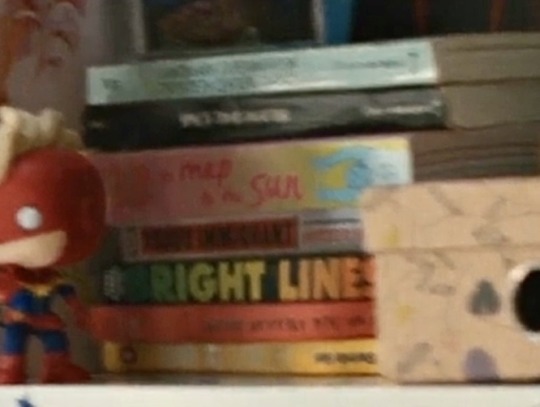
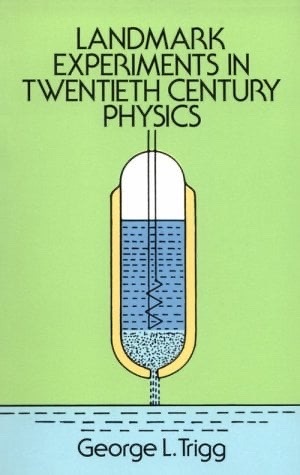
1. Landmark Experiments in Twentieth Century Physics by George L. Trigg
College-level book about experiments that helped us learn about x-rays, lasers, isotopes, superconductors, and all kinds of other things I don’t understand. Meant to be more practical than theoretical since it talks about the actual methodologies of these experiments. Could be for school, or for Kamala and Bruno to run their own tests of Kamala’s powers. The first of many books in the Khan house that come from Dover Publications.

2. Space Time Matter by Hermann Weyl
“An esoteric initiation into space time physics” -Amazon reviewer. I’m gonna be real, I don’t understand half the words in this book description, but apparently it’s famous for introducing gauge theory, which was later reborn as phase transformations in quantum theory. I can see this being something Kamala reads to try and understand the bangle transporting her to the Partition. Also from Dover.

3. A Map to the Sun by Sloane Leong
A graphic novel about a high school girl’s basketball team learning to work together despite their many differences and conflicts. Also it has a gorgeous color palette. Seems fairly self explanatory why it’s in this movie. I’ll definitely be borrowing this from my library! Like my friend Kamala recommended a book to me herself.

4. The Good Immigrant anthology edited by Nikesh Shukla
21 essays from Black, Asian, and Minority Ethnic (BAME) people in the UK about their experiences. It was crowdfunded initially, extremely critically acclaimed, and has gotten spinoffs and sequels. Riz Ahmed, who is British Pakistani, is one contributor, and a fun fact is that Rish Shah (Kamran from Ms. Marvel) worked with Riz Ahmed in an Oscar winning short called The Long Goodbye. Also, the editor, Nikesh Shukla, is currently writing the Spider-Man India comics series!
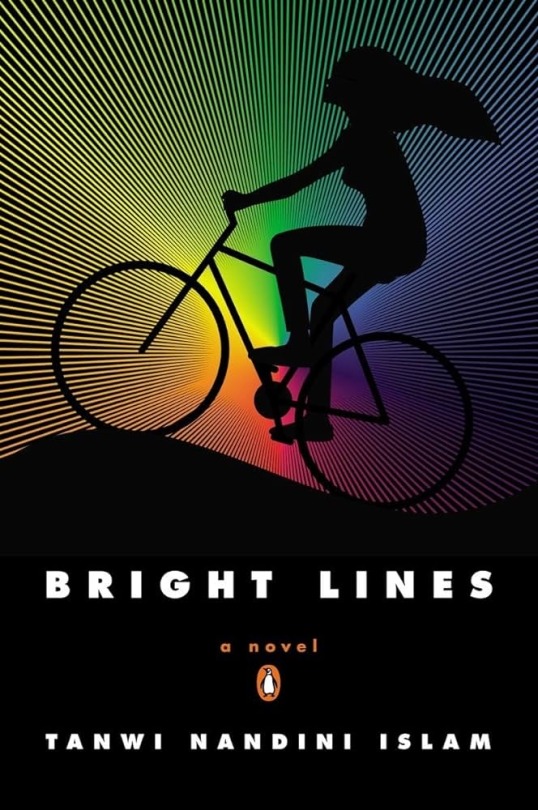
5. Bright Lines by Tanwi Nandini Islam
A coming-of-age story about 3 young adults with complicated family, friend, and romantic relationships between them. They have to travel from Brooklyn to Bangladesh together one summer and thereby discover a lot about themselves. I haven’t read it, but there seems to be a ton of complex representation of LGBTQ, POC, immigrant, and Muslim characters. I wonder how much the three main characters can be compared with our three characters with complex relationships in The Marvels, and I wonder which character Kamala most relates to!
6. I can’t tell! The font is bugging the hell out of me because theoretically, with that amount of contrast, I should be able to read a word when I get two inches from the TV and mess with the settings. ¯\_(ツ)_/¯
7. I also can’t tell, but I’m being easier on myself because the title is written in white on a yellow background. It’s not the only book I know off the top of my head with this color scheme (Yellowface by RF Kuang) because the title is definitely multiple words. Help!
Shelf 2, right to left:
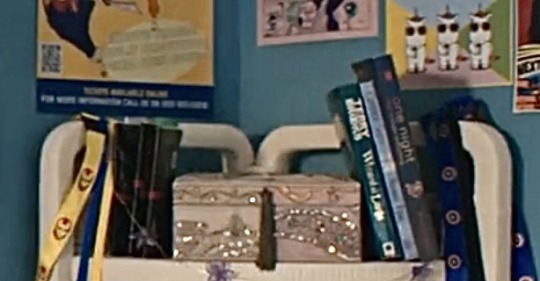

1. One Night that Changes Everything by Lauren Barnholdt
A YA romance where, through a convoluted series of events, a teenager must face all of her insecurities in one night. I can see Kamala devouring this as brain candy after wrestling with those advanced science books, or using it as fic inspiration!
2. Can’t tell, but love the color scheme!
This next one is a weird one, because I am 100% sure of what book it is, but I cannot find a picture of a matching edition.
3. Wizard at Large by Terry Brooks
It’s definitely, without a doubt, this book (where a character and a magical medallion are accidentally transported to Earth from another realm and switches places with an evil genie). Like those are the words on the spine and the plot of the book is an obvious choice for this movie. The fonts match on the audiobook, the ebook, and the next two books in the series. But try as I might, I cannot find any proof on the internet that the physical book that appears in Kamala’s room, that uses those two fonts and that spine formatting, exists. This is haunting me…
4. (On the other side of the box) It’s not The Twilight Saga Eclipse, but I definitely thought it was before I could watch in high definition. I think it’s a journal or sketchbook of Kamala’s; there are a bunch scattered throughout the room.
Shelf 3:
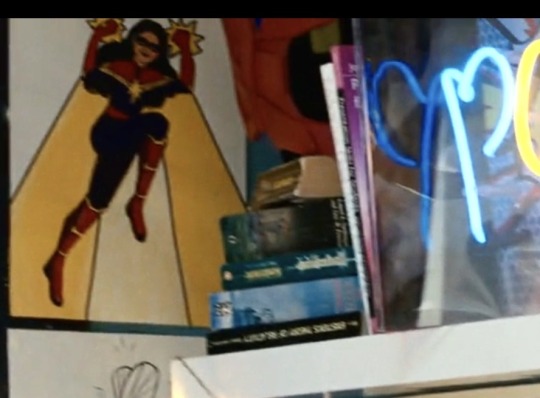
I’ve only identified the bottom book, which is Einstein’s Theory of Relativity by Max Born (Dover Publications). The third one up is HAUNTING me, it looks SO identifiable and yet!
Living Room Side Table:
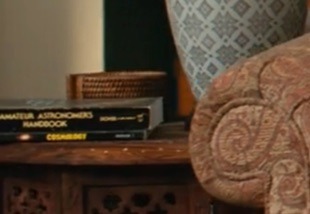
1. Amateur Astronomer’s Handbook by JB Sidgwick (from Dover Publications)
2. Cosmology by Hermann Bondi (also Dover)
Both of these seem less difficult than the science books in Kamala’s room, but reviewers note that it helps to know calculus when reading Cosmology. Idk which member of the Khan family is reading these, but I love their family’s connection to the stars 💫
Tbh I’m having so much fun doing this! And I really wish we got to see Monica’s living space so I can analyze her books 😭
48 notes
·
View notes
Note
How did you discover Greek mythology, and do you know other myths like Egyptian, Norse and others?
I discovered Greek mythology through Disney's Hercules. I thought Hades was bad until my mom was like "No child, Hera wanted to get rid of him and I was like say what?
I am from bangladesh btw. hello
I discovered Greek mythology via a kids magazine I used to read when I was like, six or seven. So this magazine used to publish some stories from the Odyssey (translated into my mother tongue) and the first story I read was of Odysseus blinding Polyphemus and thus incurring Poseidon's wrath. Back then, I had instantly fallen in love with the name Poseidon XD probably because it sounded really unique to me. But I think what actually got me invested in Greek mythology was the Percy Jackson series.
7 notes
·
View notes
Text
The biggest heist that almost was
Let me tell you about the most insane bank heist that is going to sound like I'm just leaking the script for the next American hacking movie. The goal? Steal one billion USD. And it all began with an email and a printer, which as we all know is where problems usually start. Another weapon in this heist was... Weekends and time zones.
As usual, no prior computer science education needed.
What happened?
On the morning of February 5th 2016, a printer had stopped working in the central bank of Bangladesh (Bangladesh Bank). But it wasn't just any printer, it was the printer responsible for printing all the records of the multimillion transfers going in and out of the bank. When the poor employees finally won the printer battle and had it resume normal operation, they saw a very concerning account transfer in the records that was coming out. The bank had an USD account in the USA, at Federal Reserve Bank, with approximately 1 billlion Dollars in it, and the Federal Reserve Bank had received instructions to drain almost the entire amount. In the records that came out in the printer, the American bank had attempted to urgently message the Bangladesh bank regarding this transfer, but couldn't get through to them. This was because the hack had actually started the day before, Thursday 4th, at around 20:00 Bangladesh time, when the bank was closed. However, USA had just started their day, giving the American bank plenty of time to follow through with the instructions from the Bangladesh bank to drain their entire account while they were closed. And that wasn't the end of it, as weekends are from Friday to Saturday in Bangladesh, meaning that the Bangladesh bank headquarters in Dhaka wouldn't discover this withdrawal until Sunday morning. That's when they immediately tried to reach the American bank, which of course didn't work as over there it was Saturday evening, and the American weekend is from Saturday to Sunday, meaning that they wouldn't be reachable until Monday.
You see what I mean by the hackers using time zones and weekends, finding the perfect time for the American bank to execute their orders while Bangladesh discovers the withdrawal several days too late, and again several days too late for Americans to be reachable. But it didn't stop there with their timehacking.
The money had to go somewhere from the American bank, and it would be stupid to send it directly to the hackers own account without laundering the money first. So they had set up four different bank accounts in the Philippines, using fake names and credentials. Why the Philippines? Because the Lunar new year was on Monday the 8th, which is a holiday and holiday means no bank activities in either Bangladesh or the Philippines, buying the hackers even more time. As a final act, they messed with the printer responsible for printing transaction records, adding another few hours to their schedule. Moon and stars really aligned perfectly for this plan.
But how did they do it?
It all began one year prior, in January 2015, with an email sent to several employees at the Bangladesh Bank. The email seemingly contained a job application from a person who didn't actually exist, but who was very polite in his request for a position at the bank, with a link to his CV and cover letter. Naturally this link led to a document with a little surprise gift - malware. Since the heist happened, at least one of the recipients must have clicked the link, and successfully deployed a RAT - Remote Access Trojan, malware that lets you control a computer from the comfort of your own home, as well as a toolkit with various malware to move from computer to computer, avoiding discovery, and covering their tracks.
From there, the hackers slowly made their way through the bank offices network, one step at a time to avoid setting off alarms, looking for any computer that had control of the banks SWIFT setup. SWIFT lets banks transfer large amounts of money between themselves and other banks connected to SWIFT. And as soon as they found one of those computers, they stopped. They didn't need to hack SWIFT in the traditional sense of the word - since they operated in a bank computer, the SWIFT-software assumed they naturally had to be bank employees. However, one of the parts of the malware used in the heist was for manipulating the SWIFT system, as the hackers weren't physically there to press anything. Additionally, since they were laying dormant for the time to strike, they needed to keep an eye out for SWIFT updates that could detect any tampering with the system, and adapt accordingly.
Then they waited many months for the stars to align on February 4th, 2016.
There were 35 transfers made by the hackers from the American bank account, totaling almost 1 billion USD, but there were two of these tiny little seemingly insignificant details that prevented this from becoming the worlds largest bank heist in history. The hackers biggest enemy became this concept known as “words”.
The Philippine bank accounts were all located in the same RCBC Bank office on Jupiter Street in Manila. And this would be the hackers downfall, as USA had sanctions put on an Iranian cargo ship called Jupiter. Since the transactions went to a recipient that contained the word “Jupiter”, it created a security alert in the Federal Reserve Bank that the employees needed to investigate. When they saw what was going on, they managed to stop all but five of the initial 35 transactions, thus “only” roughly 100 million USD made it to the Philippines. The Bangladesh bank requested to reverse the transactions, but since the money was in the Philippines, they would need bureaucracy in form of a court order to reclaim the money, and we all know that's not a 5 minute project. It was when Bangladesh filed the court order in late February that the case became public (since court orders are public documents) and the news broke to the country.
Once in the RCBC bank accounts, the money arrived on Friday the 5th and was immediately moved again. First the 100 million was converted to local currency, and some of it was withdrawn in cash, while the rest was sent off to other hacker-controlled locations. And this is where the second tiny little detail cut off even more of the hackers precious payday. 20 million USD had been sent to Shalika Foundation, a charity organisation in Sri Lanka. But, once again the hackers worst enemy - words - decided to strike again. A typo was made in their transaction, sending the money to “Shalika Fundation”, and a bank employee who must have had their morning coffee spotted this typo and rejected the transfer and kept the funds frozen. This left the hackers with 80 million USD.
✨Now comes the money laundering!✨
There was a second reason for choosing the Philippines as deposit zone; gambling is legal and the casinos had no money laundering regulations imposed. The accomplices of the heist booked private rooms in two casinos located in Manila - Solaire and Midas - and proceeded to purchase tokens to gamble for with the stolen money. Since they played with a room consisting of their fellow accomplices, winning was not really much of a challenge. Then the tokens could be exchanged back to money that would now be clean. To avoid suspicion, they didn't gamble all of the money at once, but over the course of several weeks gambled away the dirty money to clean money.
Who was behind it?
It's normally difficult to pinpoint where the more sophisticated hacking groups come from. Oftentimes, they will leave false clues behind that points to another group so they will face more trouble instead of the group that did it. They may even place clues from several different groups, just to mess with the analysts. It's also quite common to simply “steal” a way of working from another group, or use a leaked/stolen tool from another group (criminals aren't safe from other criminals, especially not in this business) - there are new malware coming out all the time with code that is just a slight modification of a well-known malware actor that had their source code leaked or simply had hired the same programmer. Or they may leave no clues as to who was behind it. Attribution to the guilty part is usually the single most difficult mission in IT-security - often it's just pure guesswork with little to no solid evidence to back it up, if you're lucky there's circumstantial evidence.
This case was no different. The first clue came from the IP the bad guys used to connect to the Bangladesh bank from. It was located in Pyongyang, North Korea. But, as I mentioned, this is not a conclusive verdict, as the IP may simply be planted false evidence to throw the analysts off their track. After the heist, the hackers used a data-wiper to scrub as much of their malware off the bank systems, but they didn't succeed in deleting all of it, some of the tools were still present, including the wiper.
Due to the scale of this operation, it caught the attention of every single IT-security person and IT-security company worldwide, who all of course wanted to know who and how they did it. With the remaining malware, a joint effort was made, comparing malware code to other malware code for similarities. Some was found in Poland, after an analyst noted the similarities from another suspected North Korean hack. Some was found in another infamous North Korean hack targeting Sony Pictures. More and more signs pointed towards the same actor. Some were false leads, the hackers seemed to be wanting to implicate the Russians did it, but failed quite miserably at that, just sprinkling random Russian words into the malware and making it way too obvious it was a ruse.
You may not believe this, but the North Korean government has one of the most notorious hacking groups in the world, known as the Lazarus Group. Some of its more well-known adventures include an extremely data-destructive hack of Sony Pictures (as punishment for releasing “The Interview”), creation of the ransomware WannaCry which was used against many targets worldwide (including hospitals), and various attempts at gathering information from governments and government-affiliated corporations all over the world. And, of course, this heist.
Eventually, after months of collaboration all over the world, the final verdict fell on North Korea, and specifically one of their programmers. His name is Park Jin Hyok, and worked for Chosun Expo - a front company for the North Korean government, located in Dalian (China) who used the funds of the fake corporation gained from legitimate programming jobs from customers worldwide to create the malware and plan the heist with all of its expenses. Of course he wasn't the sole person involved in this project, but it's the only person we know was in it.
This particular heist had been meticulously planned for several years, and Park Jin Hyok had moved to Dalian, set up fake IDs and built a network of contacts there to avoid suspicion. However, he didn't manage to delete all of his online footprints, and became the number one suspect when his internet activities suddenly came from Pyongyang, North Korea.
Additionally, several Chinese business men - many associated with the casino industry in China's Macau territory - were also charged and arrested for assisting with setting up the gambling rooms and coordinating the money laundering process. One unknown Chinese business man managed to get away with 31 million USD of the 80 million that remained after the heist, and as you would expect, he was never to be seen again.
With the middlemen from China paid off, not much remained of the original 1 billion to North Korea. But the heist has fascinated the whole IT-security world nonetheless.
I remember when the news of this case dropped to the IT-security world, who all wanted to take part in the hunt. It was a very fun time, we were all sitting at the edge of our seats waiting for the next update. I hope it was at least somewhat exciting for you too to read about, and thank you for reading this long post! If you liked it, please consider reblogging as it motivates me to write more. You may also like malware stuff I've written about before, such as Stuxnet or just plain evil malware that is a threat to our daily lives.
As always my inbox is open if you have any questions.
79 notes
·
View notes
Text
Discovering the Hidden Gems: Offbeat Destinations in Bangladesh
Bangladesh, with its vibrant culture, rich history, and breathtaking landscapes, often tends to be overshadowed by its more touristy neighbours. However, within this South Asian gem lies an abundance of hidden destinations that offer unique experiences away from the bustling crowds. Exploring these offbeat locations reveals the heart and soul of Bangladesh, allowing travellers to immerse…
0 notes
Text

Case Study: Rana Plaza Collapse
In April 2013, in Bangladesh, the commercial building known as the Rana Plaza collapsed due to structural failure. The confirmed death toll was over a thousand people, with thousands more injured; it is considered to be one of the deadliest accidental structural failures in recent history. Multiple reasons were given for the cause of the collapse, including:
The foundation; the building was constructed on an in-filled pond
Illegal construction; the top floors of the building were added after the fact, exceeding the weight limit of the already existing lower floors
And the use of substandard construction material
Even worse was the fact that cracks had been discovered in the building the day before the collapse but workers in the building were ordered to return the next day regardless.
Sources/Further Reading: (Image source - Wikipedia) (Rethinking the future) (Independent) (International Labour Organization)
7 notes
·
View notes
Text

Seven-color tea or seven-layer tea is a well-known hot beverage in Bangladesh. Romesh Ram Gour invented the seven-layer tea after discovering that different tea leaves have different densities. Each layer contrasts in color and taste, ranging from syrupy sweet to spicy clove. The result is an alternating dark/light band pattern throughout the drink, giving the tea its name.
src.: https://web.archive.org/web/20170504214809/http://prothomalo.news/archives/1954, https://www.theguardian.com/travel/2016/aug/28/sylhet-bangladesh-seven-layer-tea-nikantha-tea-cabins, https://www.wsj.com/articles/BL-SJB-7617
6 notes
·
View notes
Text

Born a photographer March 29, 1944. Abbas Attar was an Iranian transplanted to Paris. He dedicated himself to documenting the political and social life of societies in conflict. In a career that spanned six decades, he covered wars and revolutions in Biafra, Bangladesh, Northern Ireland, Vietnam, the Middle East, Chile, Cuba, and South Africa during apartheid. He also documented life in Mexico over several years, and pursued a lifelong interest in religion and its intersection with society.
From 1978 to 1980, Abbas photographed the revolution in Iran, to which he returned in 1997 after seventeen years of voluntary exile. His book Iran Diary 1971-2002 is a critical interpretation of Iranian history, photographed and written as a private journal.
During his years of exile Abbas traveled constantly. Between 1983 and 1986 he journeyed through Mexico, attempting to photograph a country as a novelist might write about it. The resulting exhibition and book, Return to Mexico: Journeys Beyond the Mask, helped define his photographic aesthetic.
From 1987 to 1994, he focused on the growth of Islamism throughout the world. Allah O Akbar: A Journey Through Militant Islam, the subsequent book and exhibition, spanning twenty-nine countries and four continents, attracted special attention after the 9/11 attacks by Islamic jihadists. A later book, Faces of Christianity: A Photographic Journey (2000), and touring show, explored Christianity as a political, ritual and spiritual phenomenon.
Abbas’s concern with religion led him in 2000 to begin a project on animism, in which he sought to discover why non-rational ritual had re-emerged in a world increasingly defined by science and technology. He abandoned this undertaking in 2002, on the first anniversary of 9/11, to start a new long-term project about the clash of religions, defined as a culture rather than faith, which he believed are turning into political ideologies and therefore one of the sources of the strategic struggles of the contemporary world.
From 2008 to 2010 Abbas travelled the world of Buddhism, photographing with the same skeptical eye. In 2013, he concluded a similar long-term project on Hinduism.
Most recently before his death, Abbas was working on documenting Judaism around the world.
A member of Sipa from 1971 to 1973, then of Gamma from 1974 to 1980, Abbas joined Magnum Photos in 1981 and became a member in 1985.
On Wednesday April 25, 2018 the Iranian photographer Abbas Attar known simply as Abbas, died in Paris, aged 74.
According to Abbas, in a 2017 interview with Magnum, there are two photographic methods: “One is writing with light,” he said, “and the other is drawing with light.” While he viewed other Magnum photographers like Henri Cartier-Bresson as adherents of the latter, the former was the foundation of Abbas’ practice. In lieu of placing his focus on single moments in time, he looked at his photographs as interlinked elements of a greater whole. In this sense, Abbas was a storyteller, and his images were pages of tales on celluloid, which were no less arresting when viewed (or rather, read) in isolation.
In the same interview, Abbas noted that it was a 1968 trip to New Orleans that made him understand the importance of what he called “sequencing”, or creating a narrative thread through a series of images. Examples of this can be seen in Abbas’s book Return to Mexico: Journey Beyond the Mask (1992), a document of his travels through the country in the 1980s.
His books aside, Abbas’ work has been the subject of exhibitions in galleries and museums around the world, including the Tehran Museum of Contemporary Art, the National Museum of Singapore, Galerie FNAC and the Magnum Gallery in Paris, and the Grey Art Gallery at New York University.
“It is with immense sadness that we lose him,” Dworzak said. “May the gods and angels of all the world’s major religions he photographed so passionately be there for him.”
Daily inspiration. Discover more photos at Just for Books…?
12 notes
·
View notes